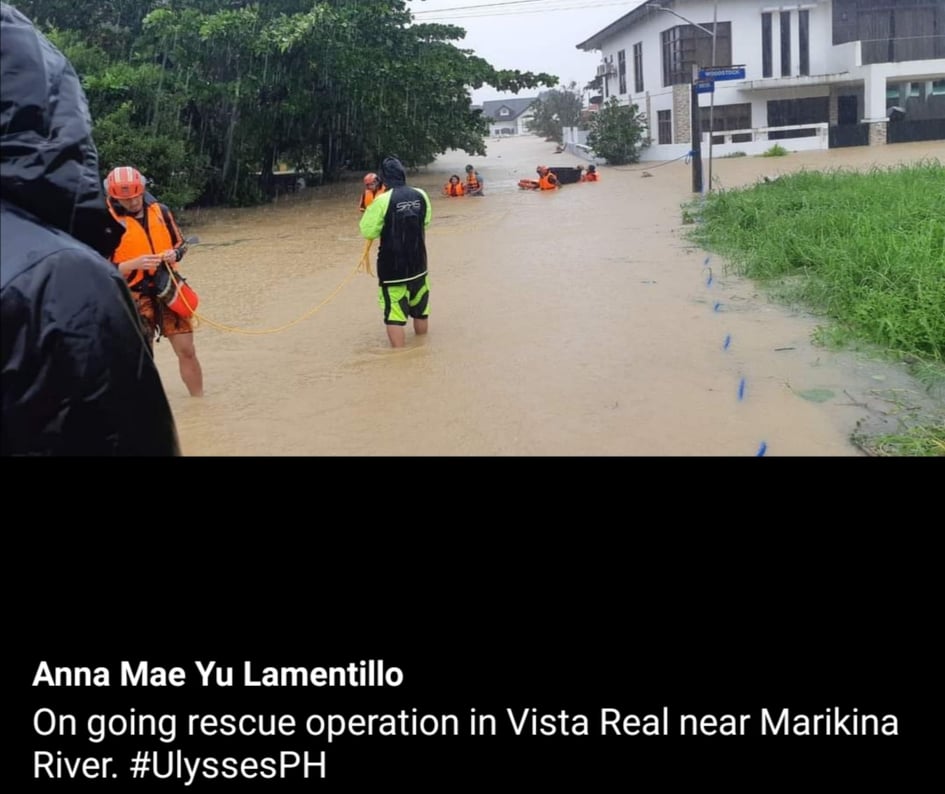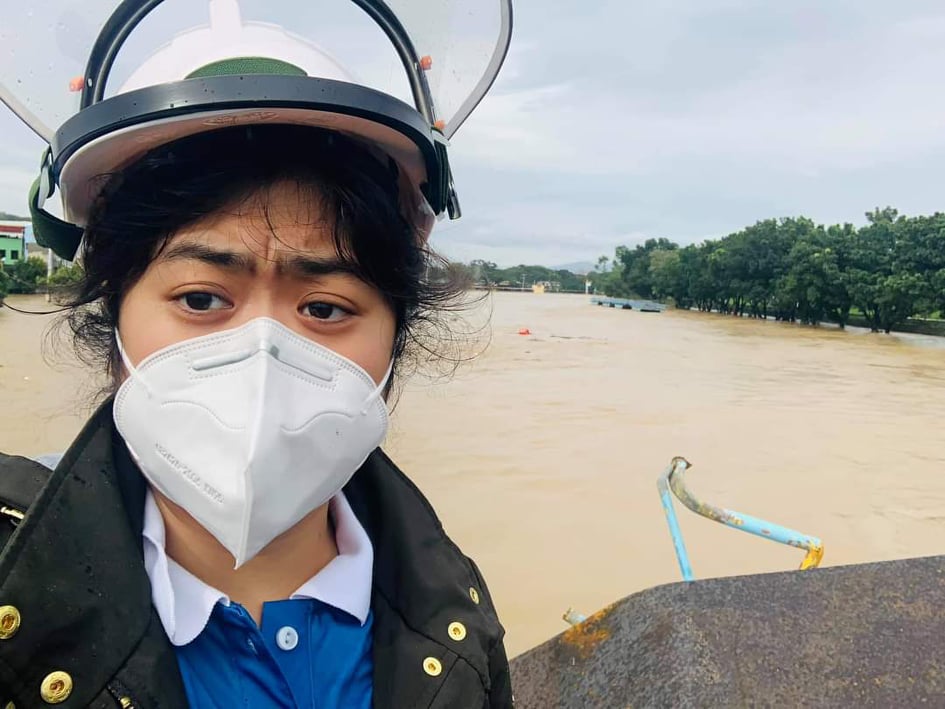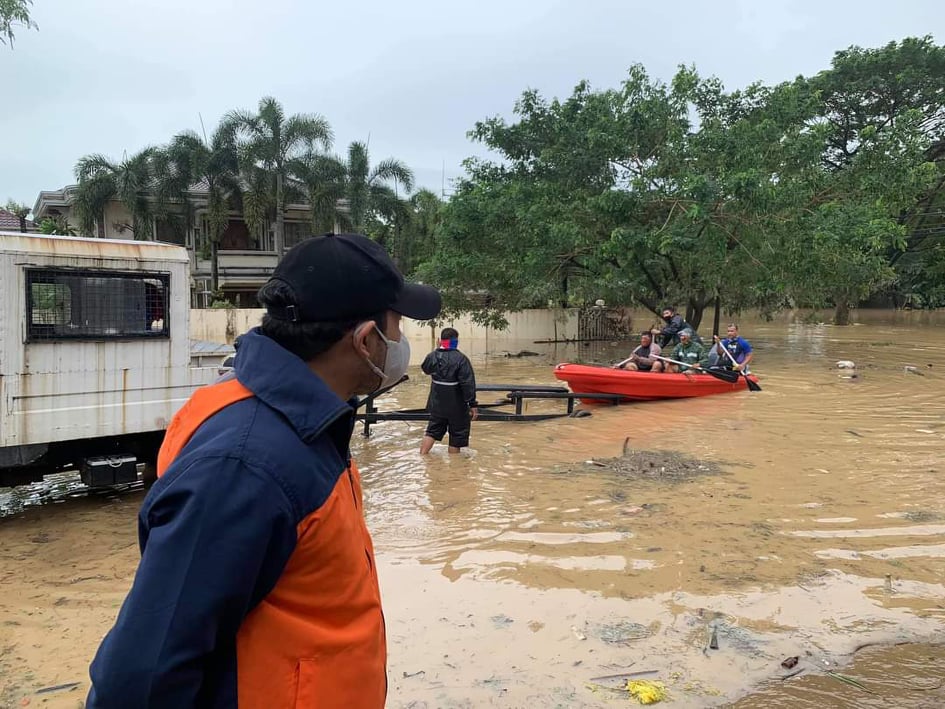The tropical cyclone battered the National Capital Region and other parts of Luzon with maximum sustained winds of 155 km per hour (96 miles per hour) and gusts of up to 255 kph (158 mph); and instigated major flooding in some areas, reminiscent of Ondoy’s deluge in 2009.

After heaving a sigh of relief when they were spared from the worst of Super Typhoon Rolly, residents of Metro Manila and CALABARZON faced the brunt of Typhoon Ulysses (internationally codenamed Vamco) as it wreaked havoc in the nation’s largest island.
Philippine Coast Guard Commandant, Admiral George Ursabia Jr., whose men are in the middle of rescue operations, described the scene on the ground as heartbreaking.
“It is a reminder of nature’s overwhelming power against people. Maybe, if there is one thing we can learn from this experience is we try to avoid living in disaster prone areas, and if we cannot avoid it, we take it as our individual responsibility to plan and prepare ahead to minimize the impact of disaster to ourselves, our family, and our communities,” he said.

Ursabia also urged his fellow public servants to train harder, organize further, and be better equipped to deliver the kind of service that the public deserves.
Comparable to Ondoy
The 21st tropical cyclone to enter the Philippines made landfall three times, and left a number of barangays in Marikina, Rodriguez and Cainta submerged, sometimes, in one-story deep floods. To many, the scene was reminiscent of Typhoon Ondoy (internationally codenamed Ketsana), which unleashed floods of near-biblical proportions in 2009.

Ulysses is the third typhoon to hit the storm-battered country in as many weeks. Its impact was felt as early as yesterday afternoon, as 155-km winds swept across Luzon.

One of the heaviest hit parts of Metro Manila is Marikina City, where the Marikina River breached the 21.8-meter mark, going past Ondoy’s 21.5 meter water levels. The Binga, Magat and Angat Dams have also reportedly released water, which may have aggravated flooding in low lying areas.
“The Philippine Red Cross, police, military and other rescuers used boats to reach people stranded in their homes in Marikina City, one of the hardest-hit areas of the capital, where the water in some streets was up to shoulder height.
“‘The magnitude of what we’re experiencing now is comparable to Ondoy,’ Marikina City Mayor Marcelino Teodoro told CNN Philippines. “‘We have so many people who until now are stranded on their rooftops or trapped on the second floor of their houses. Some areas that were historically not flooded, such as the City Hall, are submerged.’

“Schools, which have been empty since the start of the coronavirus pandemic in March, are being used as emergency shelters along with gymnasiums. Around 180,000 people were in evacuation centres, Civil Defense said.
For Joee Guilas, a resident of Village East Executive Homes in Cainta, the situation bears an uncanny resemblance to 2009. “It was a bad flooding situation. It brought us back to the time of Ondoy. Waters are yet to subside and I’m unlikely to be able to do my newscast tonight,” he shared via text.
Meanwhile, some Metro Manila residents have also opted to stay in hotels to, literally, weather the storm, especially as 3.8 million MERALCO customers have reportedly experienced power outtage in the last 24 hours.
Patti Javier, Director of Communications for Makati Shangri-La Manila, told PeopleAsia editor-in-chief Joanne Rae Ramirez via text, that “Staycation guests are staying with us because of the power outtage.”
She also noted that the volume of guests are more than the usual, since normally staycationers stay during the weekends. “Makati Shangri-La is central and accessible. We are happy to be a home of comfort and refuge during this time,” she said.
‘Pure devastation’
Like Rolly, Ulysses’ impact was first felt in the Bicol region before it made its presence felt in Mega Manila yesterday evening. It was a wind-and-rain event that prompted the country’s weather bureau to raise storm Signal Number 3 in Metro Manila and nearby provinces.
In a report by Xave Gregorio, which appeared today in The Philippine Star, the reporter said that “nobody expected ‘Ulysses’ to wreak this much damage. The latest cyclone packed weaker winds than Rolly did, but unlike the latter, Ulysses navigated directly through Metro Manila and only weakened thereafter. The bad news is Bicol, located at a traditional entry point for typhoons, is now reeling from another calamity.

“The result was devastation. In Metro Manila and neighboring areas alone, 2.5 million households remained without power 10 hours into the day, while an additional 988,848 homes in Calabarzon, Mimaropa, Bicol and Western Visayas regions also lacked electricity. Telco connections are fluctuating, while thousands had been evacuated in Marikina City where the river began eating up homes along the coast,” he reported.
Gregorio further said that President Rodrigo Duterte went ahead of the typhoon on Wednesday and suspended government work and classes held online.

In another report by Ron Lopez and Mikhail Flores, which also appeared today on The Philippine Star, heavy rains shut down Metro Manila, a mega city of 12 million people, and surrounding areas, turning streets into rivers.Quoting Rouel Santos, a retired disaster officer in Rizal province, he said that “a lot of places are submerged. Many people are crying for help.”
An official from the country’s Office of Civil Defense said rainfall dumped by Ulysses so far was “near the volume” during Ondoy, warning flooding could worsen as runoff from nearby mountains flowed into already swollen waterways, Lopez and Flores’ reports added.





